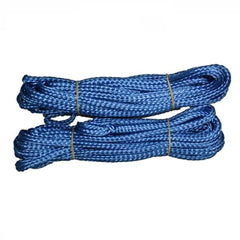Main Menu
Paddle Sports
Boating & Swimming
Inflatable Boats
Ice Eaters &. Fountains
Bearon Aquatics - Power House Ice Eaters for Sale
The Bearon Aquatics Ice Eater is one of the Best Dock De-Icers on the Market.
It will Protect Your Assets from Winter's Wrath.

Bearon Aquatics Ice Eater Models
Bearon Aquatics
P250 Ice Eater
For Small Boats
- 1/4 Horsepower
- 2.5 Running Amps (115v) / 1.25 (230v)
- 20 - 25ft Water Opening
- 28 lbs of Thrust
- Moves 900 gallons of water per minute
- 1650 RPM's
- Hertz: 50/60
- Shroud: 12 in W x 6 in H
-
Cost/24hrs of Use: $0.97
(Based at $0.14/kWh - avg 2023 cost in Missouri)
Bearon Aquatics
P500 Ice Eater
For Small Boats
& Dock Slips
- 1/2 Horsepower
- 6 Running Amps (115v) / 3 (230v)
- 40ft Water Opening
- 32 lbs of Thrust
- Moves 1075 gallons of water per minute
- 1650 RPM's
- Hertz: 50/60
- Shroud: 12 in W x 12 in H
-
Cost/24hrs of Use: $2.20
(Based at $0.14/kWh - avg 2023 cost in Missouri)
Bearon Aquatics
P750 Ice Eater
For Mid-Size Boats
& Multi-Slip Docks
- 3/4 Horsepower
- 6 Running Amps (115v) / 3 (230v)
- 60ft Water Opening
- 34 lbs of Thrust
- Moves 1275 gallons of water per minute
- 1650 RPM's
- Hertz: 50/60
- Shroud: 14 in W x 15 in H
-
Cost/24hrs of Use: $2.20
(Based at $0.14/kWh - avg 2023 cost in Missouri)
Bearon Aquatics
P1000 Ice Eater
For Large Boats, Large Docks, & Marinas
- 1 Horsepower
- 7 Running Amps (115v) / 3.5 (230v)
- 80ft Water Opening
- 36 lbs of Thrust
- Moves 1400 gallons of water per minute
- 1650 RPM's
- Hertz: 50/60
- Shroud: 14 in W x 15 in H
-
Cost/24hrs of Use: $2.67
(Based at $0.14/kWh - avg 2023 cost in Missouri)
How Does an Ice Eater Work?

Customers are often amazed at how well these units perform. They can melt ice that has already formed and will maintain a large opening in freezing conditions. It is our go-to trusted source for protecting our boats, docks, and marinas from winter's wrath and it can be used in freshwater or saltwater.
How Do You Position an Ice Eater in the Water?
There are several ways that you can mount your de-icer based on your needs.
The most common way is to suspend it vertically, with the included mooring ropes, to create a circular de-icing pattern. You can also position the ropes to suspend the de-icer at an angle to create an elongated oval. This option is great for protecting piers and any other time you need a longer, but narrower pattern.
Additionally, you can also you a dock mount or a shallow water mount to position your ice eater. All of these mounting options give you the versatility to make it perform exactly as you need it to!

Bearon Aquatics Ice Eater Mounting Options:

Bearon Aquatics Mooring Ropes
2 are included with the purchase. Additional ropes can be used to create other water flow options.
Click to view Mooring Ropes

Bearon Aquatics Ice Eater Dock Mount
Allows you to quickly and easily adjust the angle with precision. Great for oval-shaped openings.
Click to view Ice Eater Dock Mount

Bearon Aquatics Shallow Water Stand
Perfect for ponds and shallow water. Often used by duck hunters to keep their favorite water hole open.
Click to view Shallow Water Stand
Most Popular Ice Eater Accessories:

Bearon Aquatics Ice Eater Timer
Set your unit to only run at certain hours of the day. This will keep energy costs down.
Click to view
Bearon Aquatics Timer

Bearon Aquatics Ice Eater Thermostat
Set your unit to only run when the temperature gets near freezing point. Keeps energy costs down. Click to view
Bearon Aquatics Thermostat

Bearon Aquatics Ice Eater Screen Kit
Add a screen kit to protect your unit from chunks of ice and debris. Protects against damage. Click to view
Bearon Aquatics Screen Kit

All Other Ice Eater Accessories
View all of our other accessories.
Click to view
Bearon Aquatics Accessories
Ice Eater FAQs
How many amps does an Ice Eater draw?
When a unit is in use it will draw between 2.6 Amps and 7 Amps for 115v. The P250 runs at 2.5 amps, the P500 and P750 run at 6 amps, and the P1000 runs at 7 amps. For 230v, the running amps will be 1/2 of what they are for 115v. In this case 1.3 amps for the P250, 3 amps for the P500 and P750, and 7 amps for the P1000.
How does ice damage a dock?
Ice can damage docks in several ways and can affect different types of docks in different manners. The main problem overall is that when water freezes it expands which can cause extreme pressure on dock pilings and floats.
On lakes with floating docks, ice can form around a dock and hold it in place. Then if the water level drops, instead of the dock slowly lowering with the water level it will stay in place until the ice begins to thaw or the weight of the dock becomes too much for the ice. Then the entire dock could drop several feet at once. This can break and damage cables and also damage the entire structure of the dock, metal poles can be bent and roofs can collapse.
If your dock is made out of wood that can also be problematic in freezing conditions. Water will seep into the wood pilings and once the water begins to freeze it will expand and splinter off or even break the pilings. This can also cause the entire dock and roof to collapse or mangle.
Sometimes a dock can even survive and withstand its integrity in the ice, only to fail when the ice begins to thaw. That is when the dock can drop and land hard. Once the ice thaws and there are openings in the ice, your problems are not over. Docks can also be damaged by chunks of ice that the wind or current can blow into the dock. Floating ice can be every bit as damaging as ice freezing around a dock.
Are docks covered by homeowners insurance?
Sometimes docks will be covered by homeowners insurance but there can also be exclusions to what is covered and oftentimes ice and snow damage is not covered. Whether it is from ice expanding and damaging the dock or the weight of snow on the roof causing a collapse, dock damage is most likely NOT covered. Please check your homeowner's insurance to see where you stand.
View the Bearon Aquatics Ice Eaters:
Enjoy these helpful dock de-Icer articles for more information:
We ❤️ Hearing From Our Happy Customers...

“Great service and fast shipping! Everything arrived as described and a day early. Thanks for the help with picking out the right inflatable kayak package!”
- Kim Y ⭐️⭐️⭐️⭐️⭐️

“Great customer service. I was buying for my husband and wasn't sure of some of the specifics. The Sales Rep (Nate) promptly returned my emails and made sure I got what I was looking for. The Lillipad Boat Diving Board rocks, Thanks!”
- Angie C ⭐️⭐️⭐️⭐️⭐️

“I've now made 3 purchases from Splashy McFun and everything has been easy and arrived on time. The new water trampoline has been a big hit, many thanks guys!”
- Wally R ⭐️⭐️⭐️⭐️⭐️












